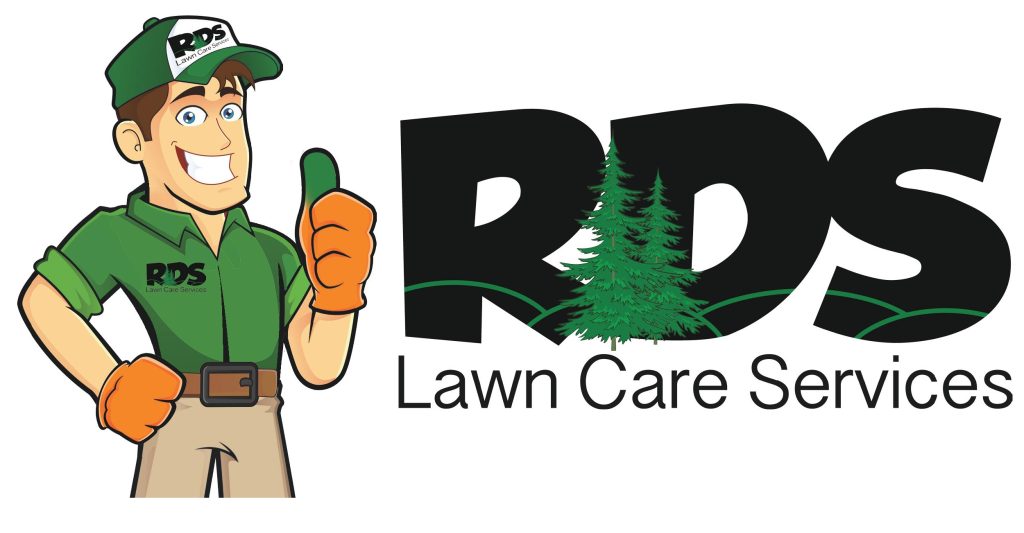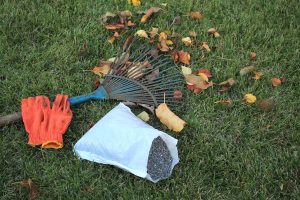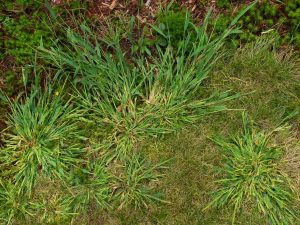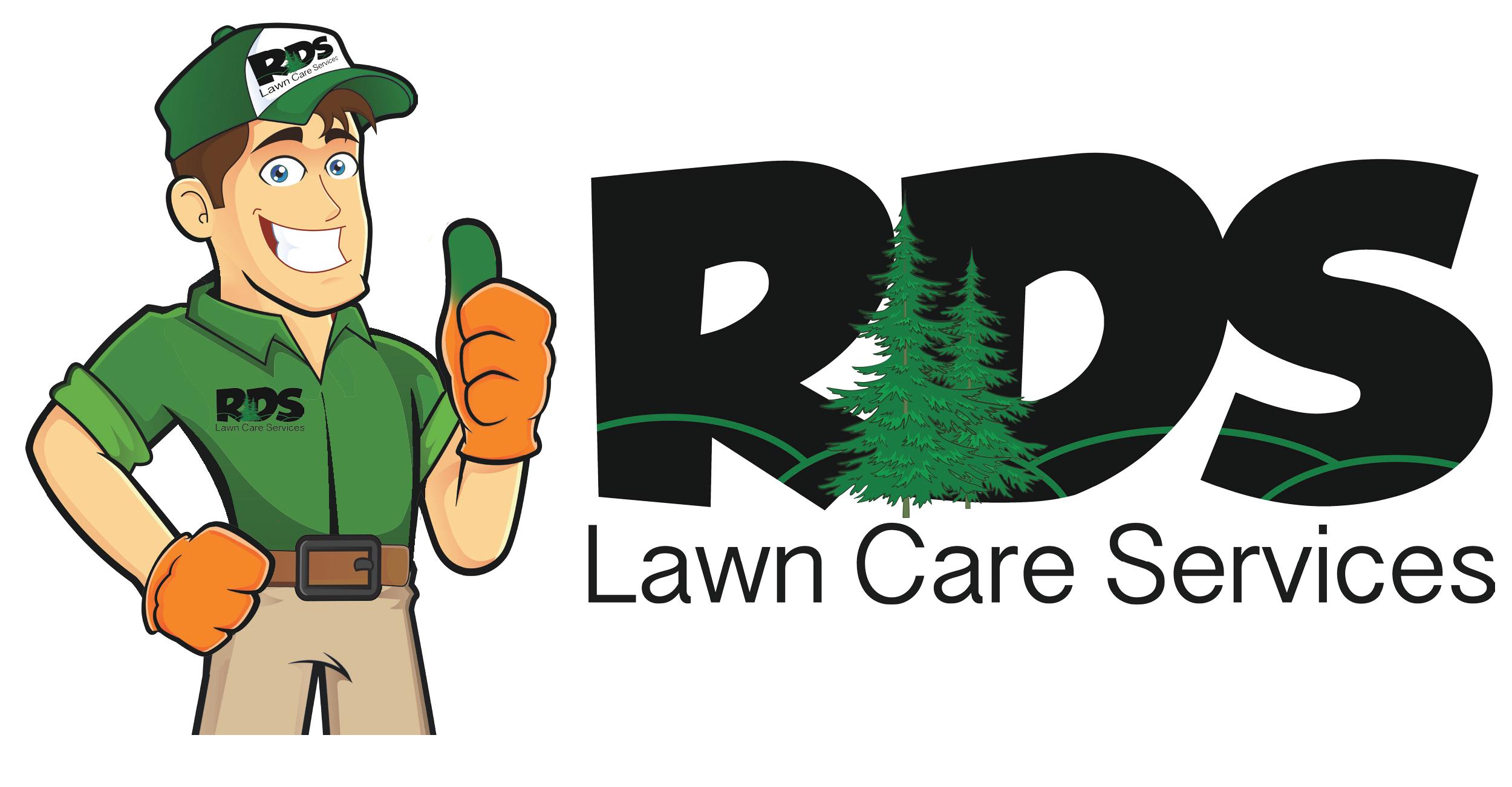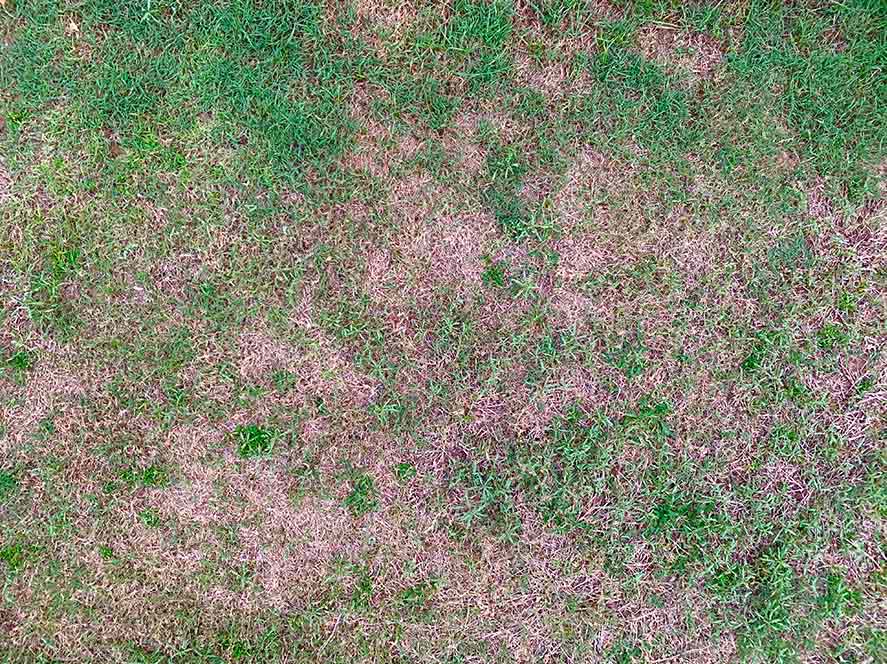
Red Thread, also known scientifically as Laetisaria fuciformis, is a lawn disease that can cause significant damage to your turf. It is caused by a fungus that thrives in wet and humid environments. The good news is that Red Thread is not very common, and there are several things you can do to prevent it from appearing in your lawn.
Symptoms Of Red Thread
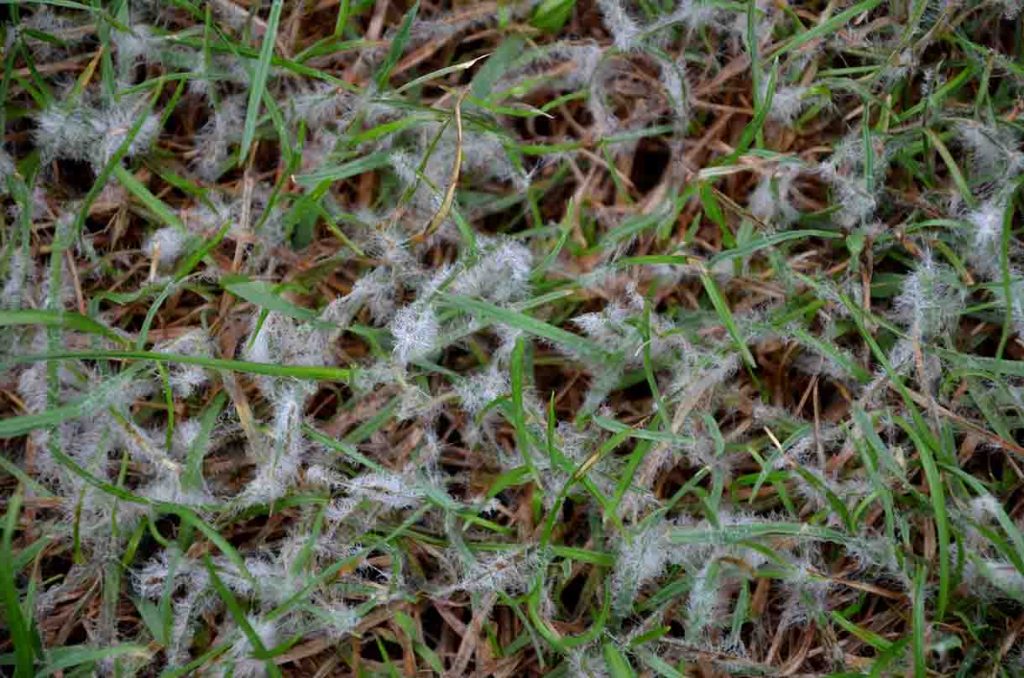
Red Thread can quickly damage grass, so it is good to know what signs to look out for on your lawn. Though it is not as common as Brown Patch or other fungal lawn diseases, Red Thread is one of the most easily identifiable diseases. The most common symptom of Red Thread is small, circular patches of thinned or discolored grass. These patches can range in size from a few inches to a few feet. These infected areas will appear pink or reddish in color, hence the name, “Red Thread.”
Key Characteristics:
- Patches of thin turf
- Cotton-like mycelium
- Red, antler-like sclerotia
- Matted and tangled turf
The red “threads” you will see on an infected lawn are called sclerotia. Under close examination, the sclerotia are often described as having an antler-like appearance towards the tips of the affected grass blades, and they create the appearance of tangled red threads when observed from a distance. The sclerotia will become hard and brittle if conditions are too dry, and they will turn pink and cotton-like when wet.
L. fuciformis initially makes its presence known by damaging turf and causing small spots of tan/yellow grass to appear, similar to the effects of Brown Patch or Dollar Spot. Those spots will begin taking on a reddish or pinkish color as the sclerotia form, which is how you can differentiate patches of Red Thread from other lawn diseases.
As it spreads, you may notice cottony tufts of mycelium expanding over newly infected blades of grass, and larger areas of infection will likely appear as matted entanglements of red strands.
What Causes Red Thread Lawn Disease?
As is the case for all fungal lawn diseases, the climate and weather conditions in your area play a huge role in the development of Red Thread. This disease mainly affects cool-season grass types, but it can be found in lawns all across the country if conditions are ideal. Generally speaking, excessively moist soil within a temperature range of 60 °F to 75 °F is the type of environment that would promote the growth and spread of Red Thread.
Any number of issues could cause your lawn to become weak or deficient, and Red Thread seeks out lawns that are already struggling. Below is a list of a few more common causes of this fungal lawn disease:
- Mowing too low
- Using unclean equipment
- Poor sunlight
- Poor soil quality/fertility
- Inadequate nitrogen levels
- Improper watering habits
How Does Red Thread Spread?
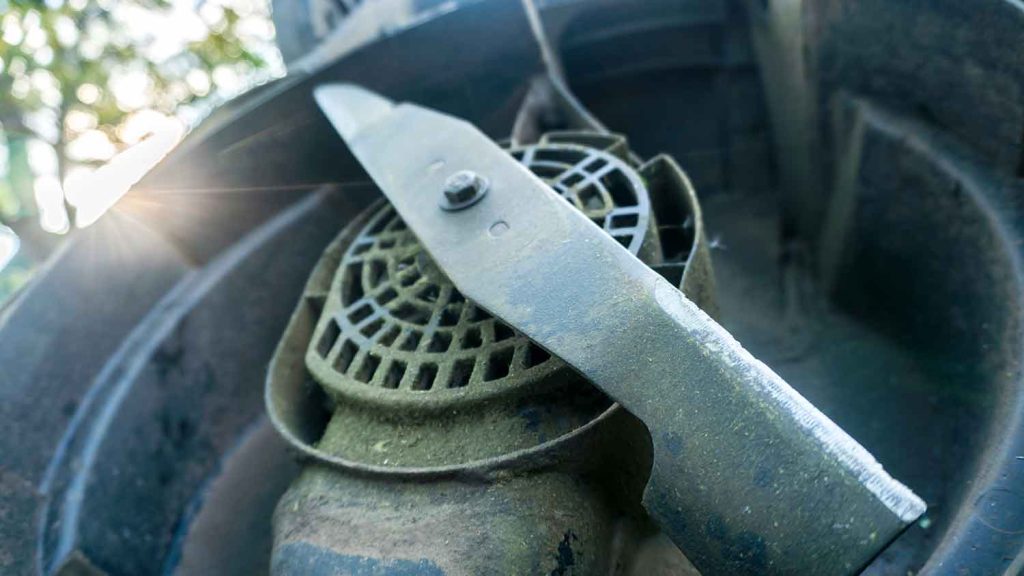
Once Red Thread begins to spread across your lawn, it will become much harder to eradicate it and save your healthy turfgrass. For this reason, it is important to know how and why the disease is growing. The spread of Red Thread happens by way of mechanical transfer, mycelium expansion, or a combination of both.
Mechanical Transfer
This is the most common method of spread, and it typically happens when you are using lawn care equipment that has not been cleaned properly. The fungus can easily attach itself to mowers, rakes, or any other type of equipment that comes into contact with an infected lawn. If that equipment is then used on a healthy lawn, it will transfer the Red Thread spores and infect that turf as well.
Mycelium Expansion
In addition to mechanical transfer, Red Thread also spreads by mycelium growth. The mycelium is the white, cottony substance you may have seen expanding over newly infected blades of grass. The cotton-like mycelium expands over compromised blades of grass, turns a pinkish color as it hardens, and forms the infamous red sclerotia once it oxidizes and dries completely.
Does Red Thread Kill Grass?
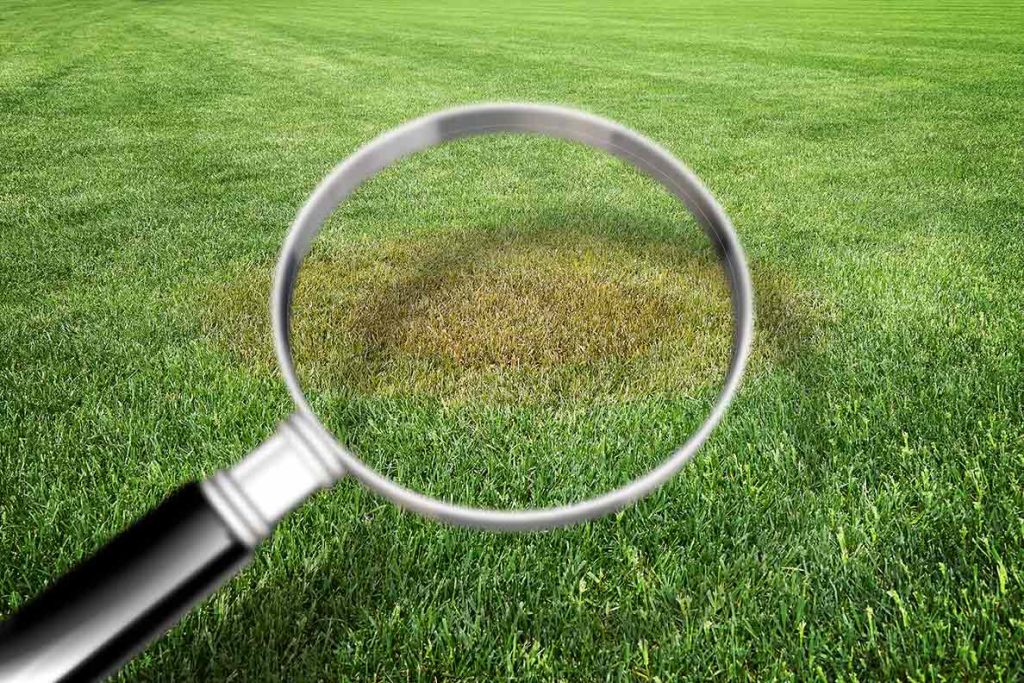
In most cases, no — Red Thread will not usually kill your grass, but it can cause damage that may lead to a general thinning of your turf. Red Thread is a foliar disease, meaning it only attacks the leaf of a plant (grass blades) and not the roots or crowns, making recovery much more likely. Though all grass types in all climates can be affected, the grasses most commonly affected by Red Thread are fescue, perennial ryegrass, bentgrass, and Bermudagrass.
- WATCH OUT FOR WINTER! As winter approaches, L. fuciformis goes dormant by attaching its mycelium to damaged grass. This mycelium is extremely resistant to the elements, which makes it the perfect method of overwintering for fungi. When it warms up, the mycelium will start growing and spreading once again, and the symptoms of Red Thread will reappear. So, while you grass may not die, it can easily be infected year after year if it is not treated.
Preventing Red Thread Lawn Disease
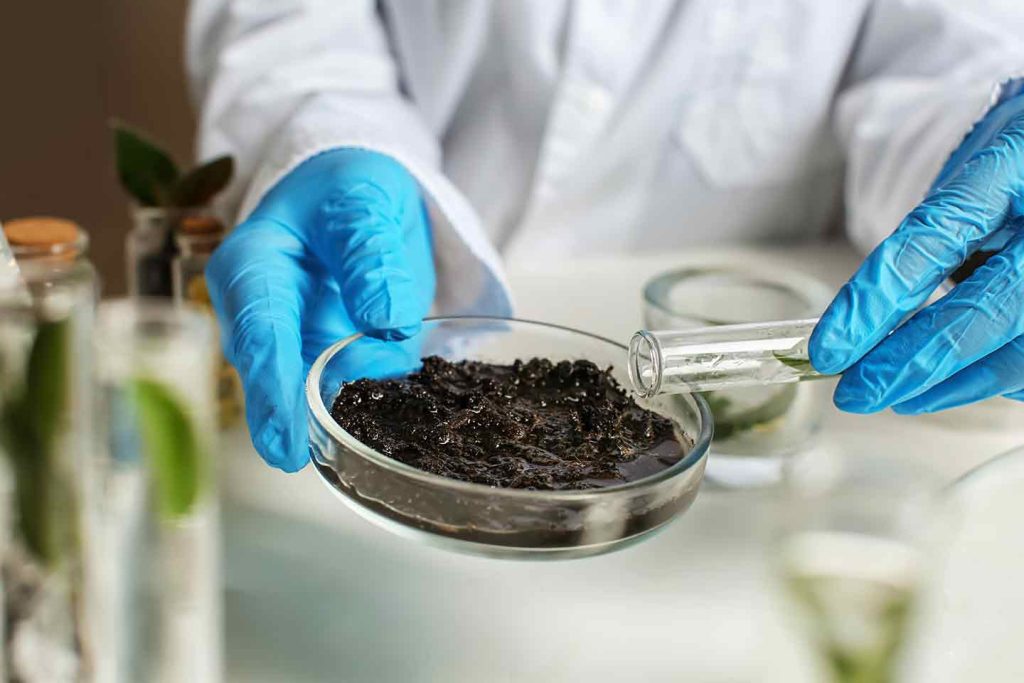
The tangled and matted nature of Red Thread makes this lawn disease a nightmare to have to deal with once it is established. Thankfully, there are some proven methods of prevention that should greatly minimize your lawn’s chances of getting infected. Stay vigilant, follow the lawn care tips below, and you should have no problem keeping your lawn free of Red Thread!
1) Test Your Lawn’s Soil Quality – Red Thread thrives in soils with low nitrogen/fertility. You should aim for a pH level between 6.0 and 7.0 to make sure that your lawn is healthy and ready to defend itself against diseases.
2) Fertilize Properly – After testing your soil, you should be able to determine what amendments (if any) need to be made to deter lawn diseases. Check labels and NPK ratios to make sure that your lawn gets adequate nitrogen, and add lime to increase your lawn’s pH.
3) Clean & Sharpen Equipment – Red Thread is most frequently transferred via unclean mower blades. Cleaning equipment before every use helps ensure that no fungi are being spread throughout your lawn while you work. Sharp blades are also important on mowers and clippers because mangled, unclean cuts of grass are more susceptible to disease.

4) Water In The Morning – Watering your lawn at dawn is the best way to make sure your lawn has enough time to dry off and absorb the water. Watering at night or closer to dusk will result in fungi because your turf will remain wet into the cold and dark hours of the night.
5) Dethatch & Aerate – When thatch (dead organic plant matter) accumulates on your lawn and your lawn becomes infected, it just makes the matted mess of Red Thread even more tangled and difficult to control. Rake up thatch as it appears, and aerate your lawn in fall to improve drainage issues.
6) Call RDS Lawn Care – There is no better way to prevent Red Thread than to call in the experts! A professional lawn care company will have all the equipment and training needed to keep your lawn looking great. Call RDS today for the best lawn disease control in the Carolinas, or contact your local lawn care provider.
